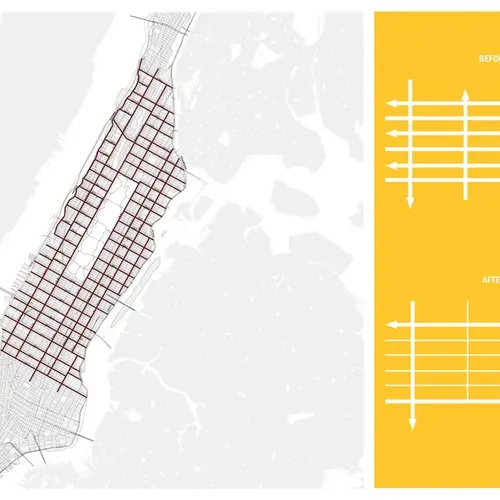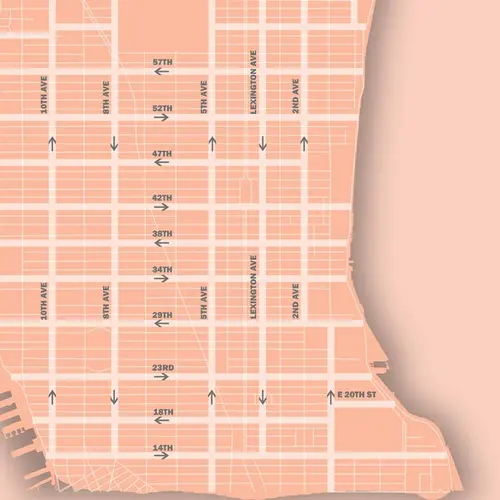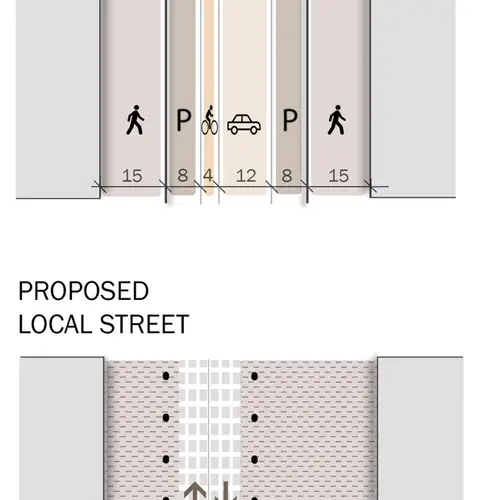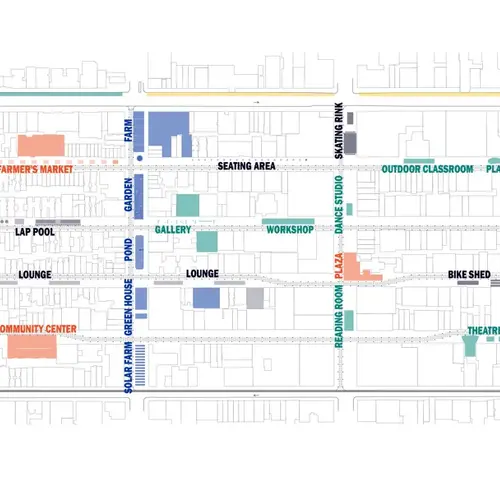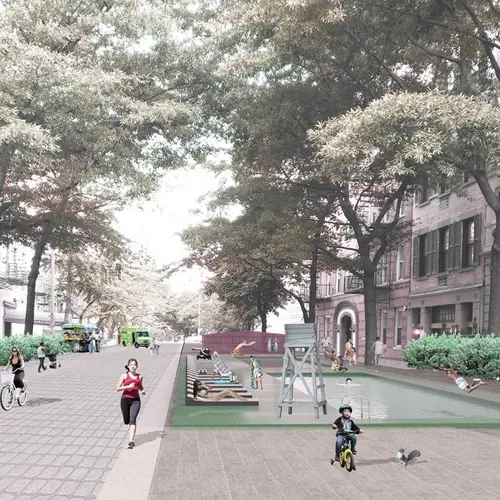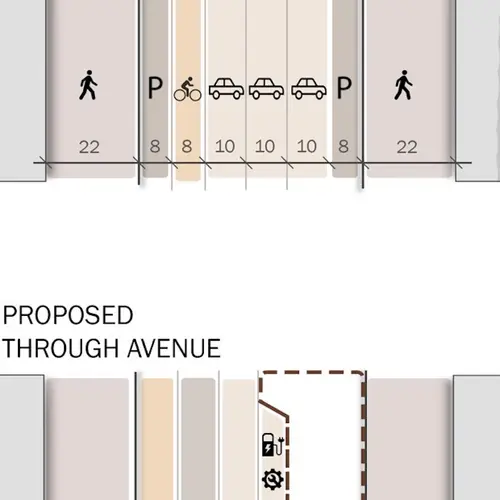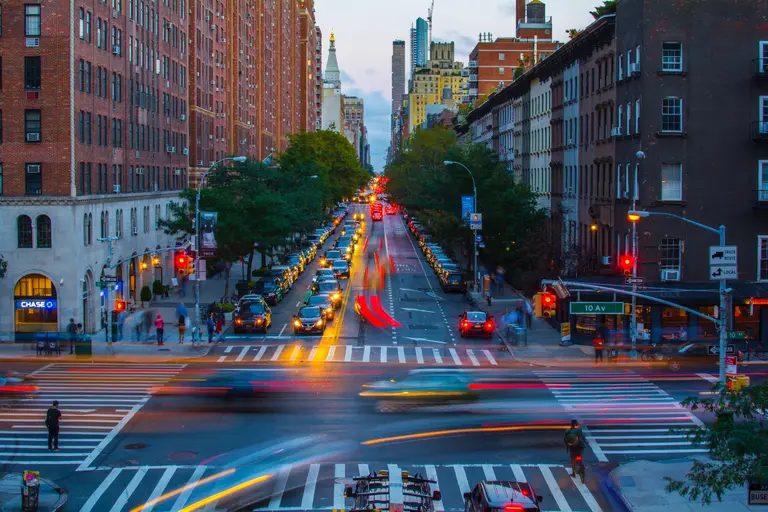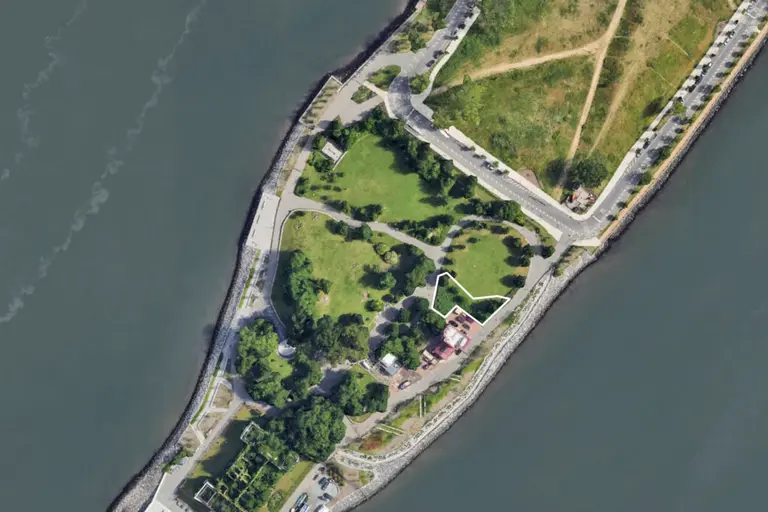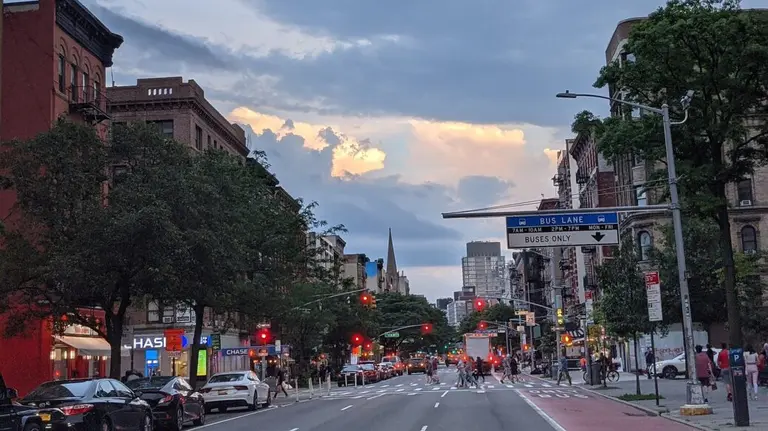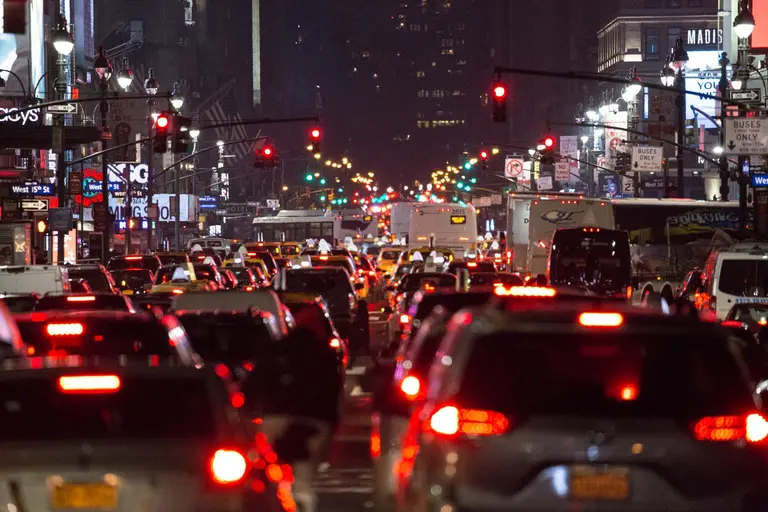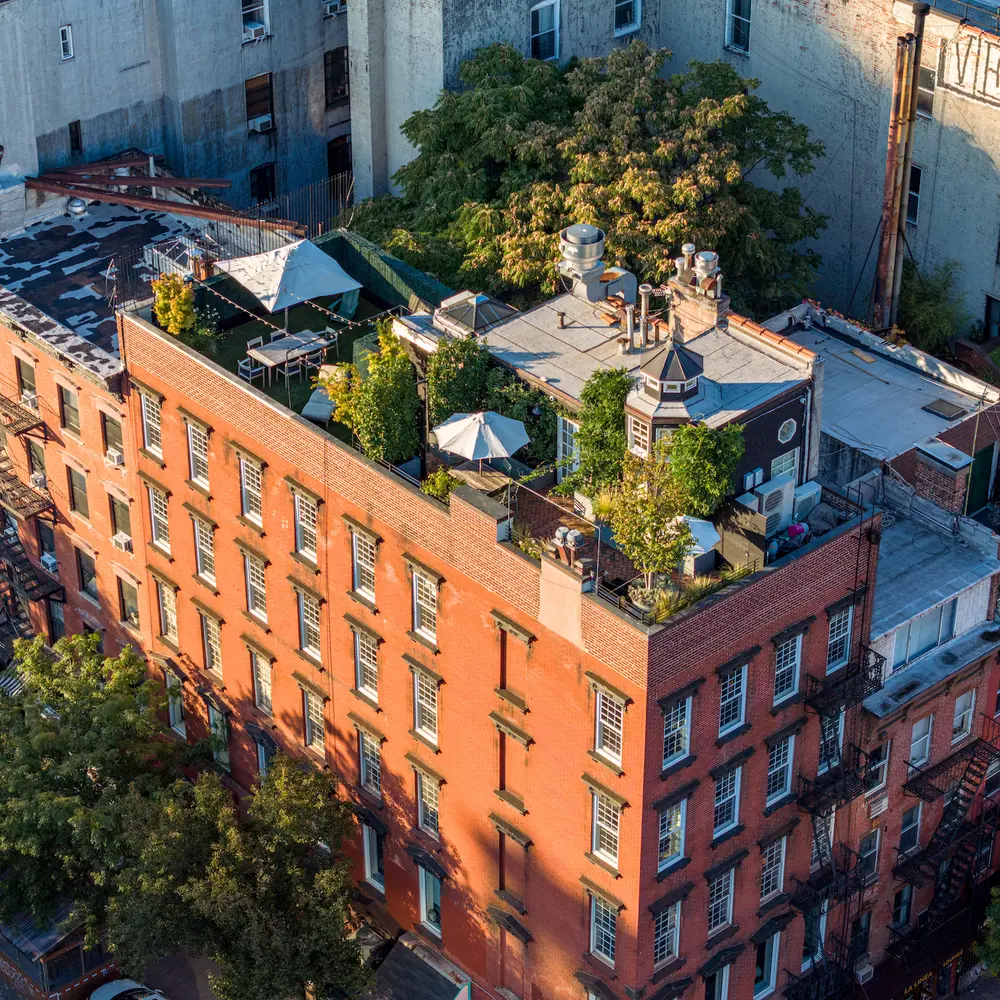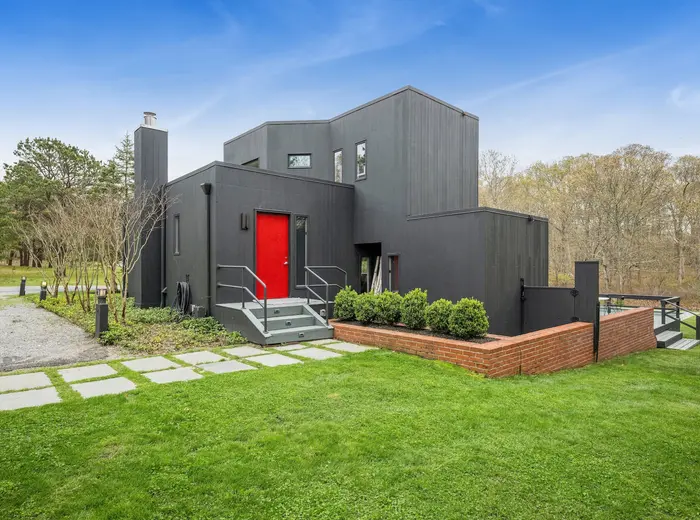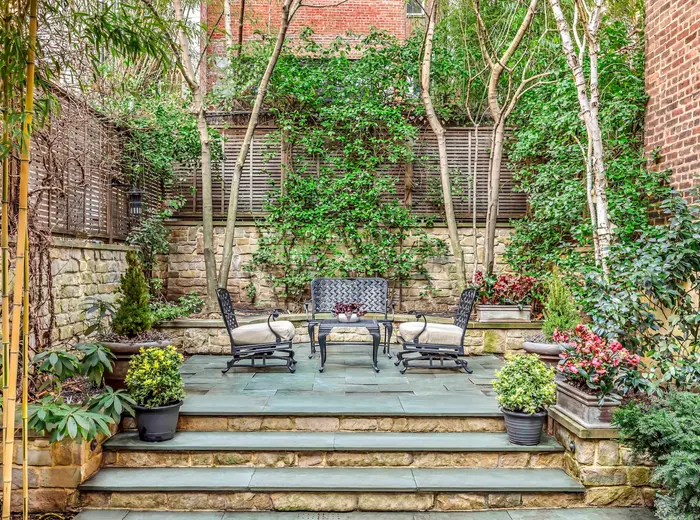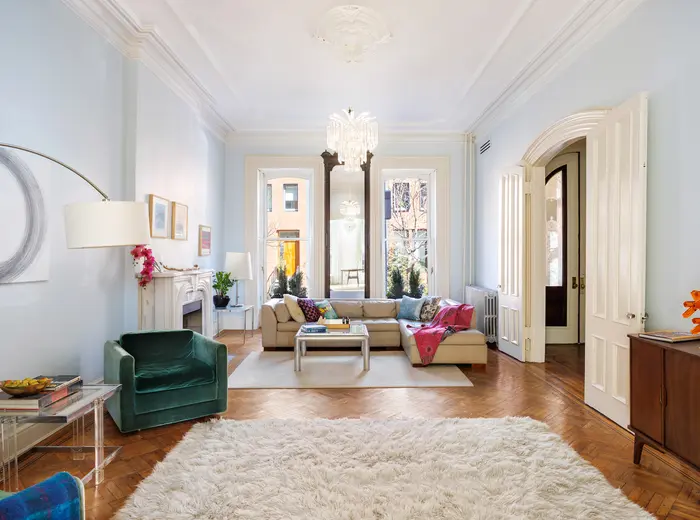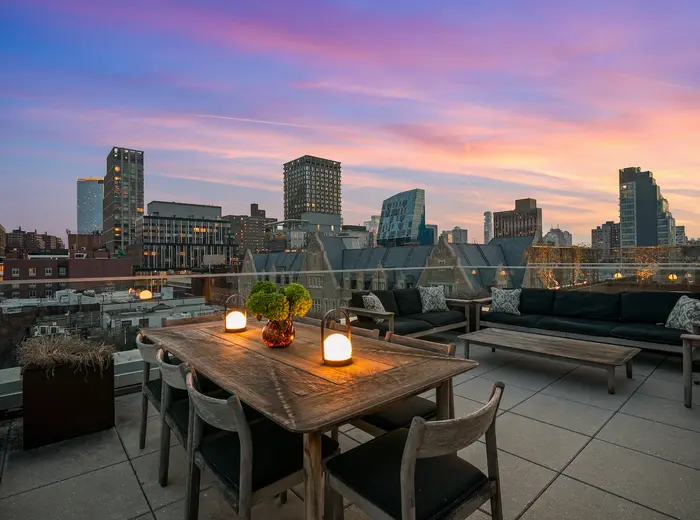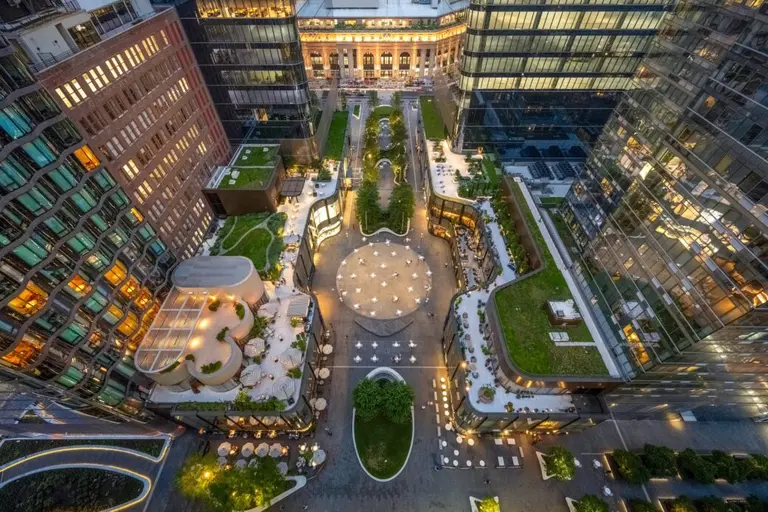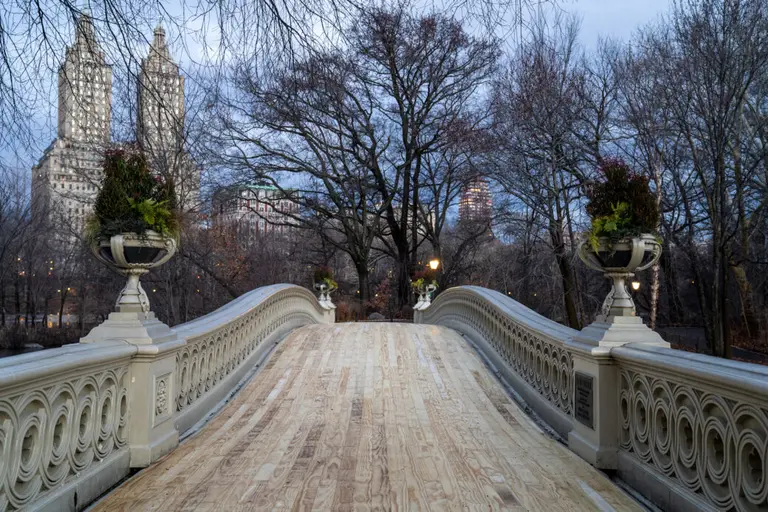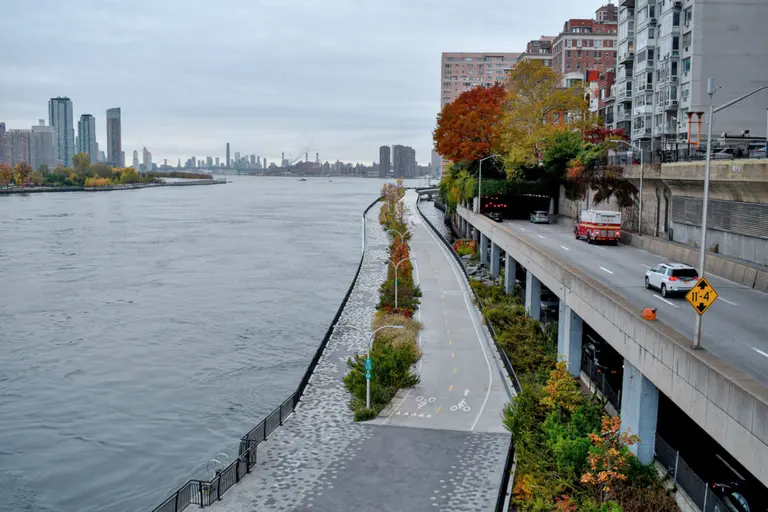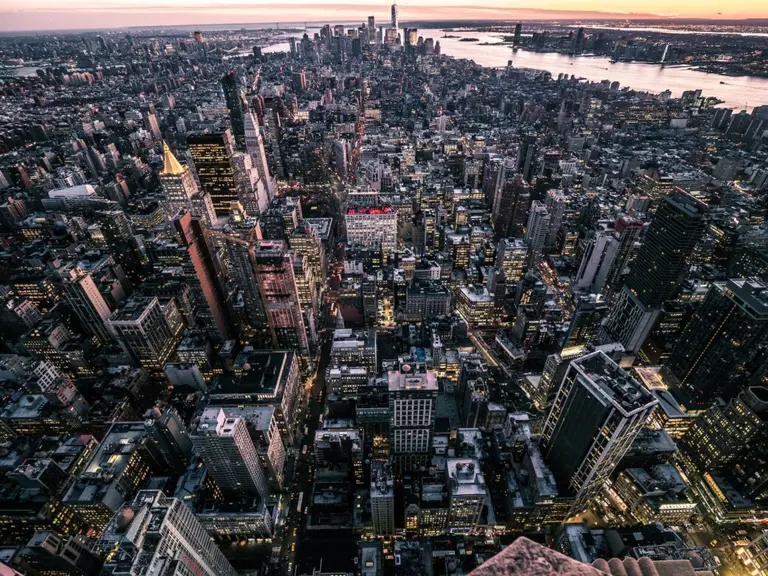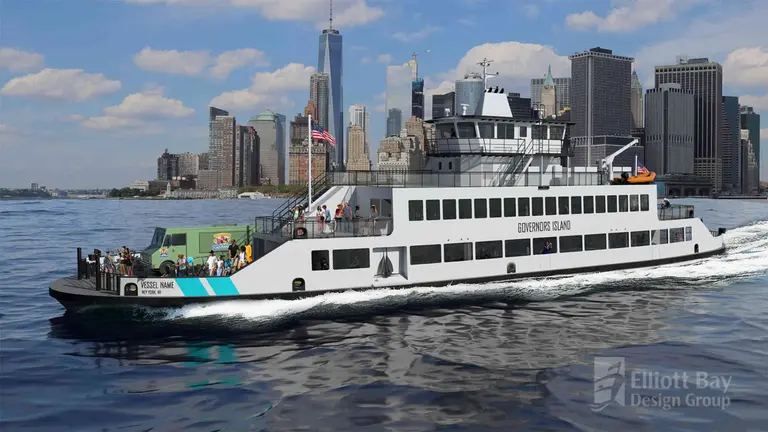Perkins Eastman reimagines Manhattan’s street grid with more pedestrian-friendly space
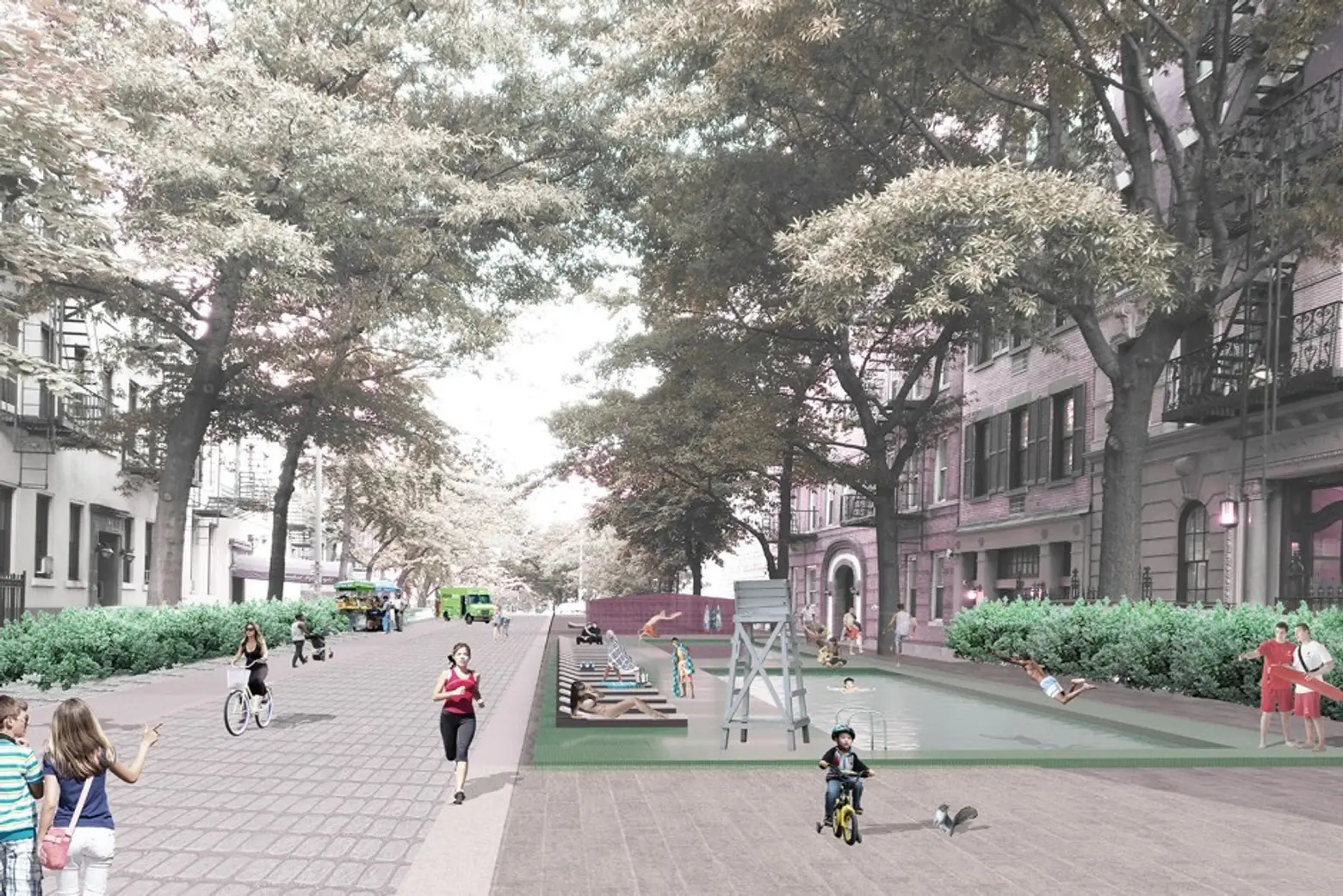
Rendering via Perkins Eastman
As a solution to Manhattan’s growing gridlock, planning and design firm Perkins Eastman is proposing a physical redesign of New York City’s street grid. In a CityLab article penned by Jonathan Cohn, who leads the firm’s transportation and public infrastructure studio, and Yunyue Chen, the recipient of Perkin Eastman’s 2017 Architectural Fellowship for the Public Realm, they argue the city should “transform the streets radically, dedicating them to pedestrians.” This includes grouping blocks into larger neighborhoods and organizing them into either thoroughfares and local streets.
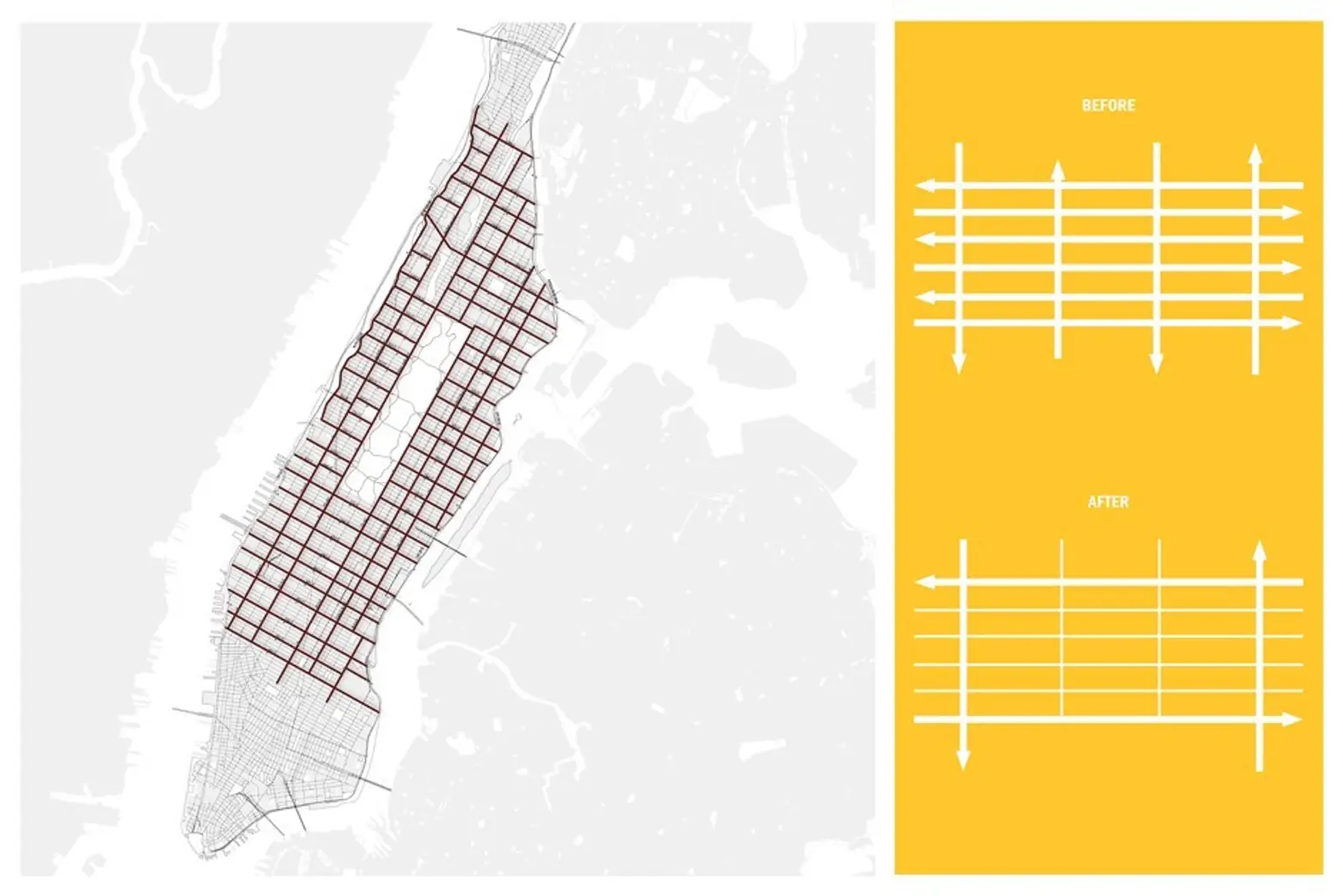
The firm’s idea comes from two international precedents. The Dutch “woonerf,” or shared street, and the “superblock” found in Barcelona. Woonerf involves continuous, curbless streets with textured surfaces meant to keep cars at the speed limit of pedestrians, or roughly 6 miles per hour.
The city of Barcelona has experimented with converting nine-block sections of the grid and turning them into superblocks that are limited to local traffic inside. Cohn and Chen took these two ideas and developed a plan fit for Manhattan’s grid.
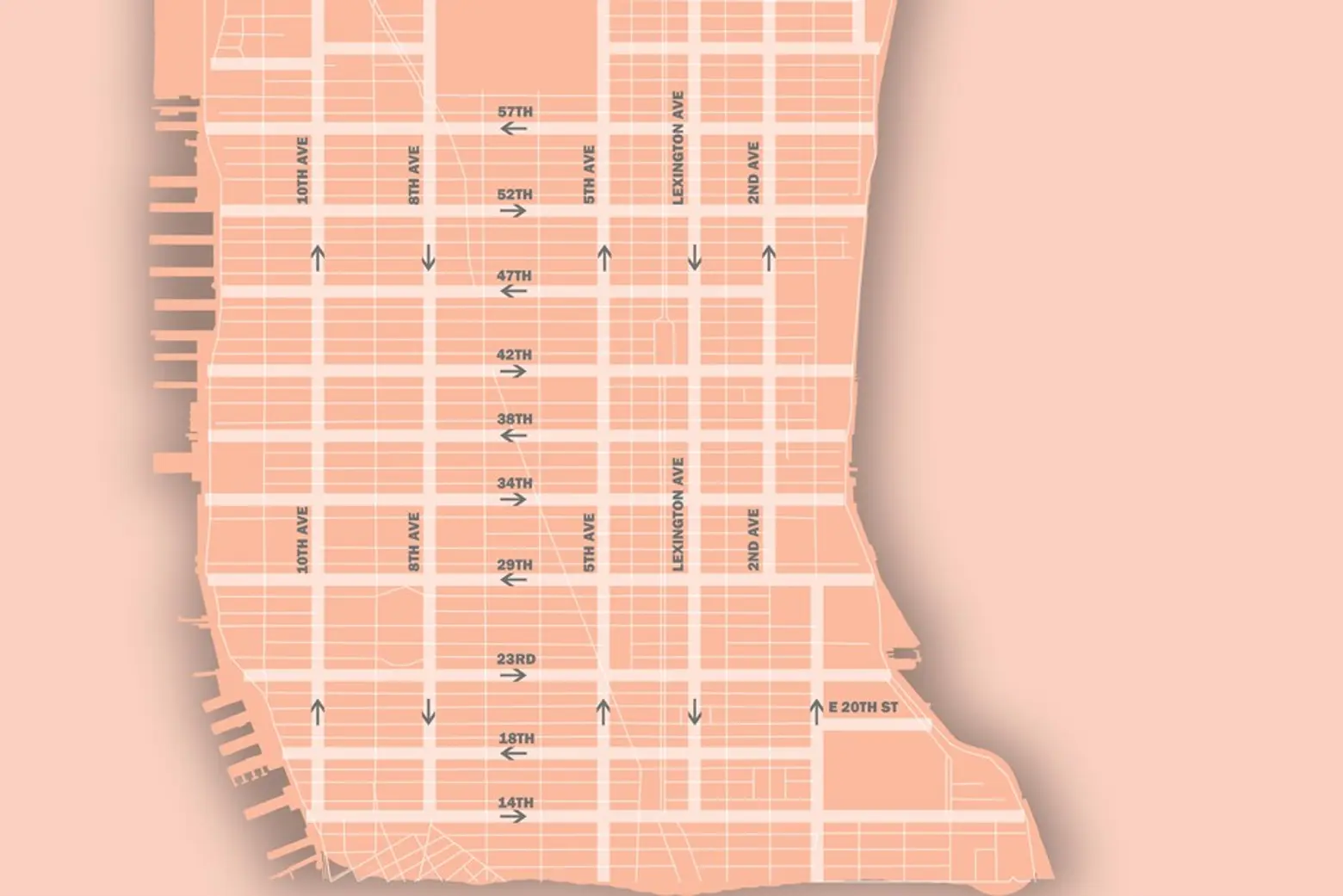
Major cross streets beginning at 14th Street and continuing up until 155th Street would be converted to thoroughfares. These streets would carry most buses and link to bridges and tunnels that connect to the other boroughs and New Jersey, according to the firm.
These were selected due to their proximity to existing public transit and housing complexes. The thoroughfares would have one-way vehicle traffic.
Local streets would be open to local traffic only, with a mandated speed limit of 6 miles per hour. According to Cohn and Chen, both pedestrians and cars could occupy the same space, due to the lower speed limit. They even suggest eliminating traffic lights within these neighborhoods.
This redesign allows for “mini-grids” to pop up, new, quieter neighborhoods made up of 10 to 15 blocks. The busy thoroughfares would surround the safer streets. The thoroughfares would be redesigned to remove street parking lanes and add protected bike lanes.
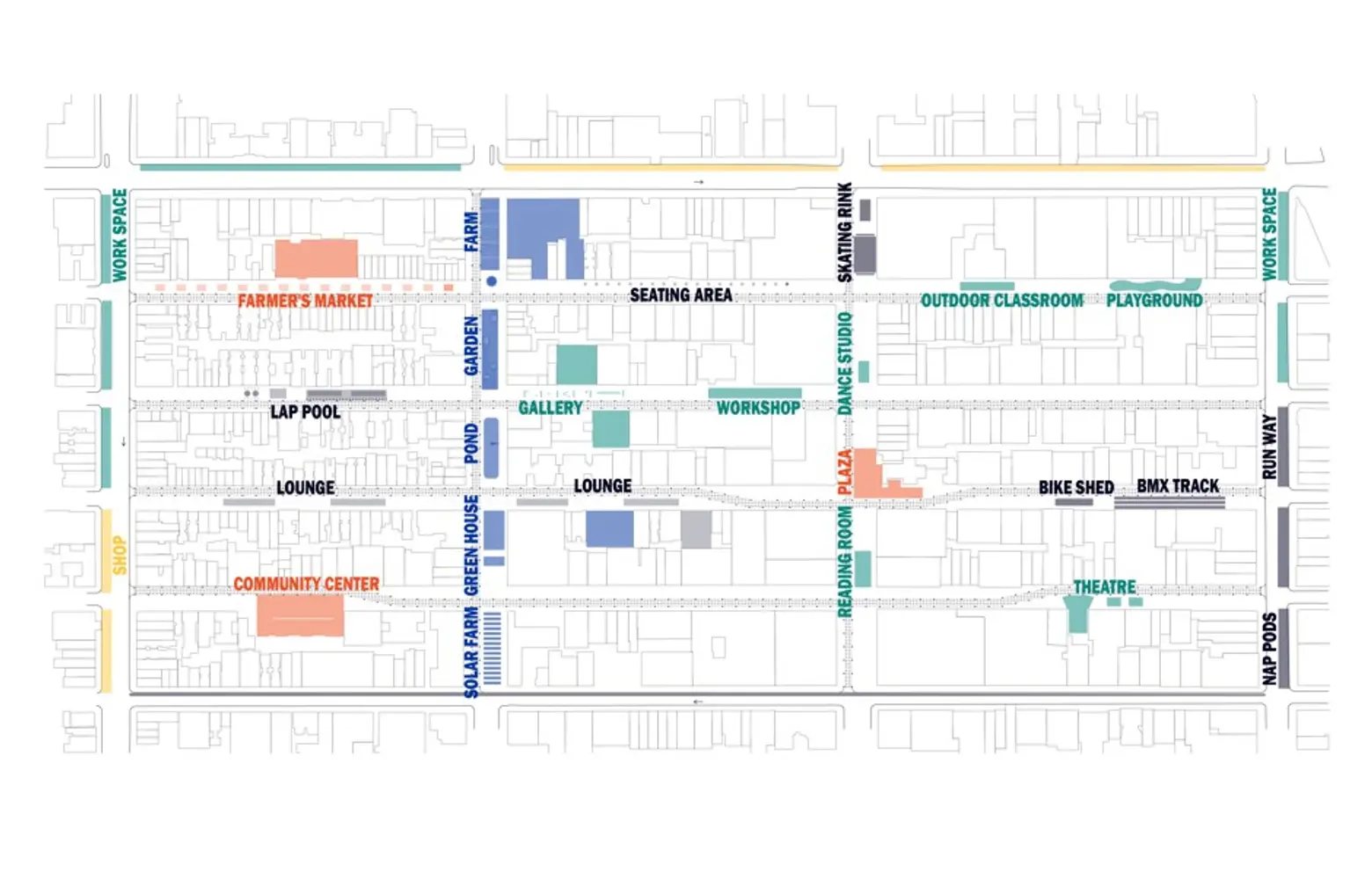
The reconfiguration would reclaim more space on the streets, allowing for new public amenities, like pop-up shops and food venues. The added street space could also host “charging stations, deliveries or taxi and ride-share pick-ups and drop-offs.”
In the article, Cohn and Chen describe streets as “real assets to the city.” They continue: “In the future, they should function as an extension of the home, the classroom, and the workplace—a realm with new opportunities for recreation and social exchange, many of which we have yet to conceive. We just need the will to make it happen.”
[Via CityLab]
RELATED:
